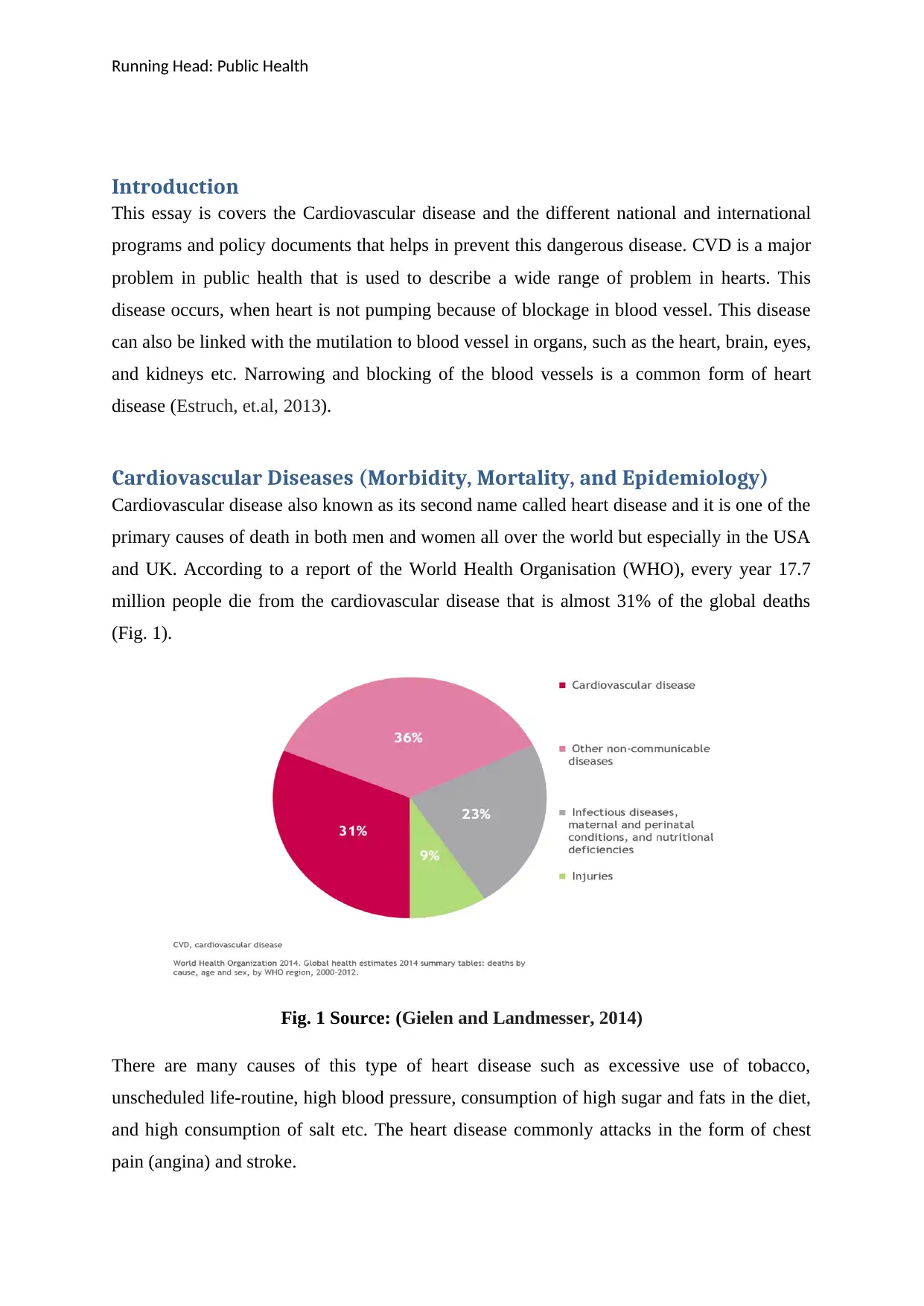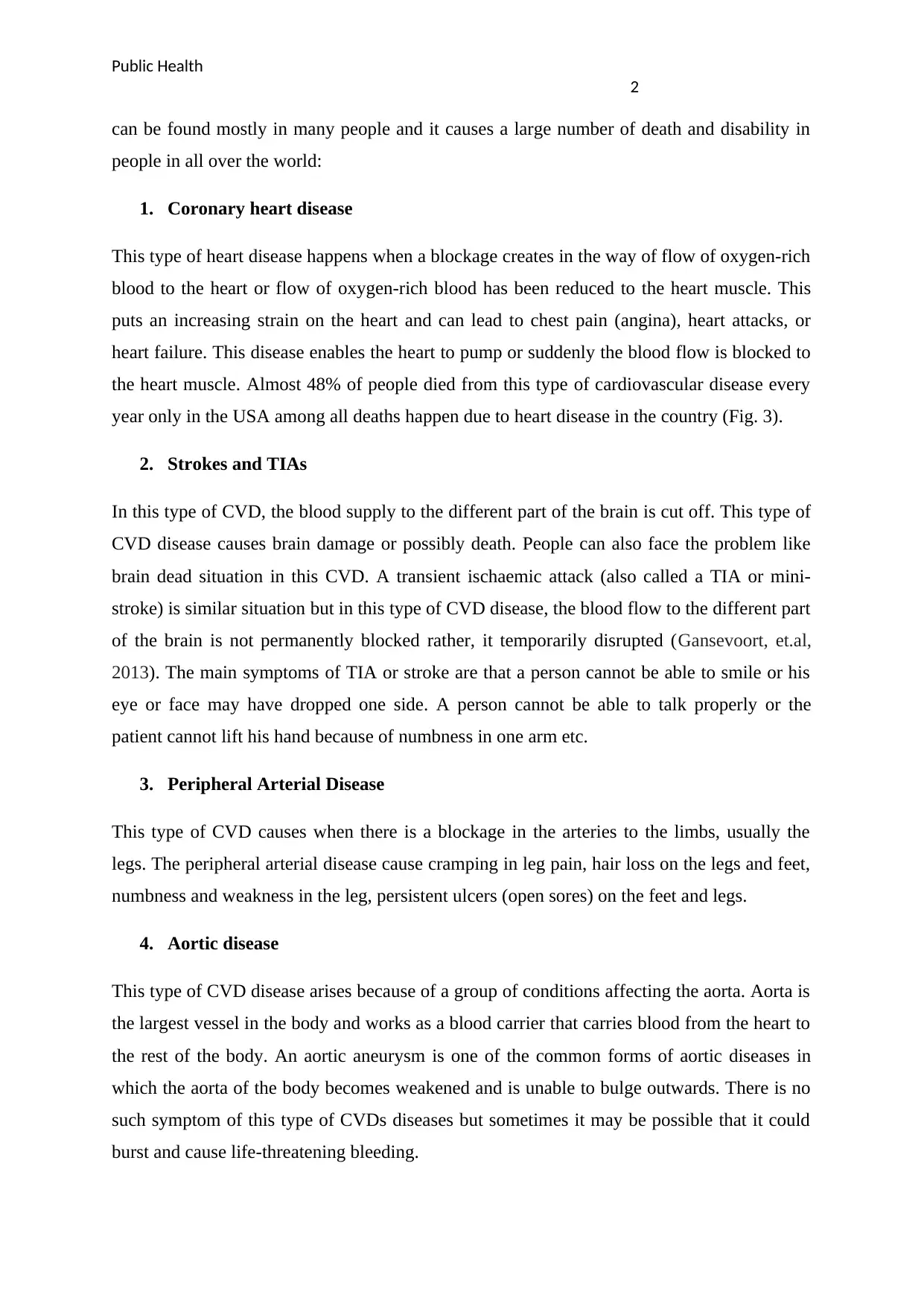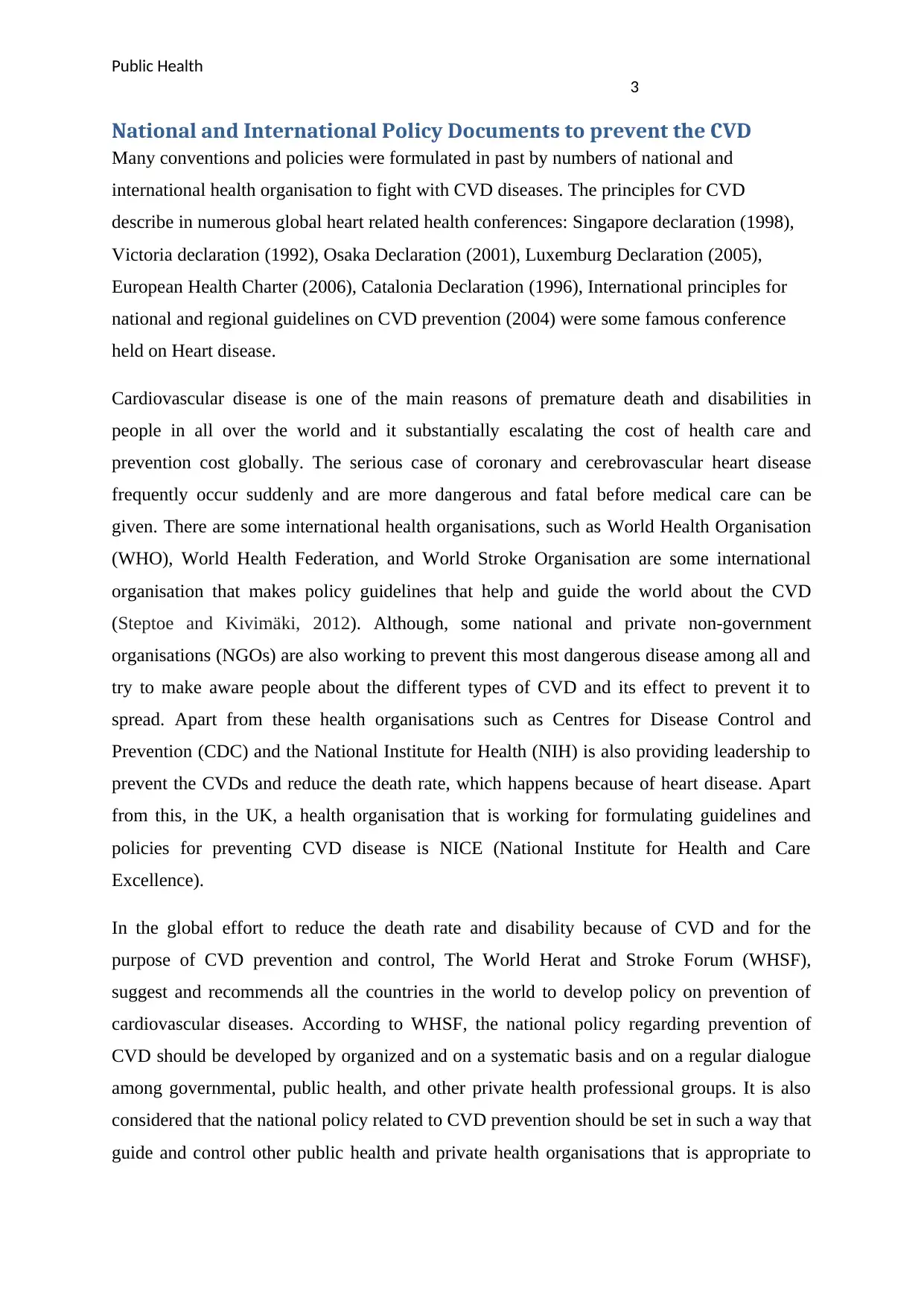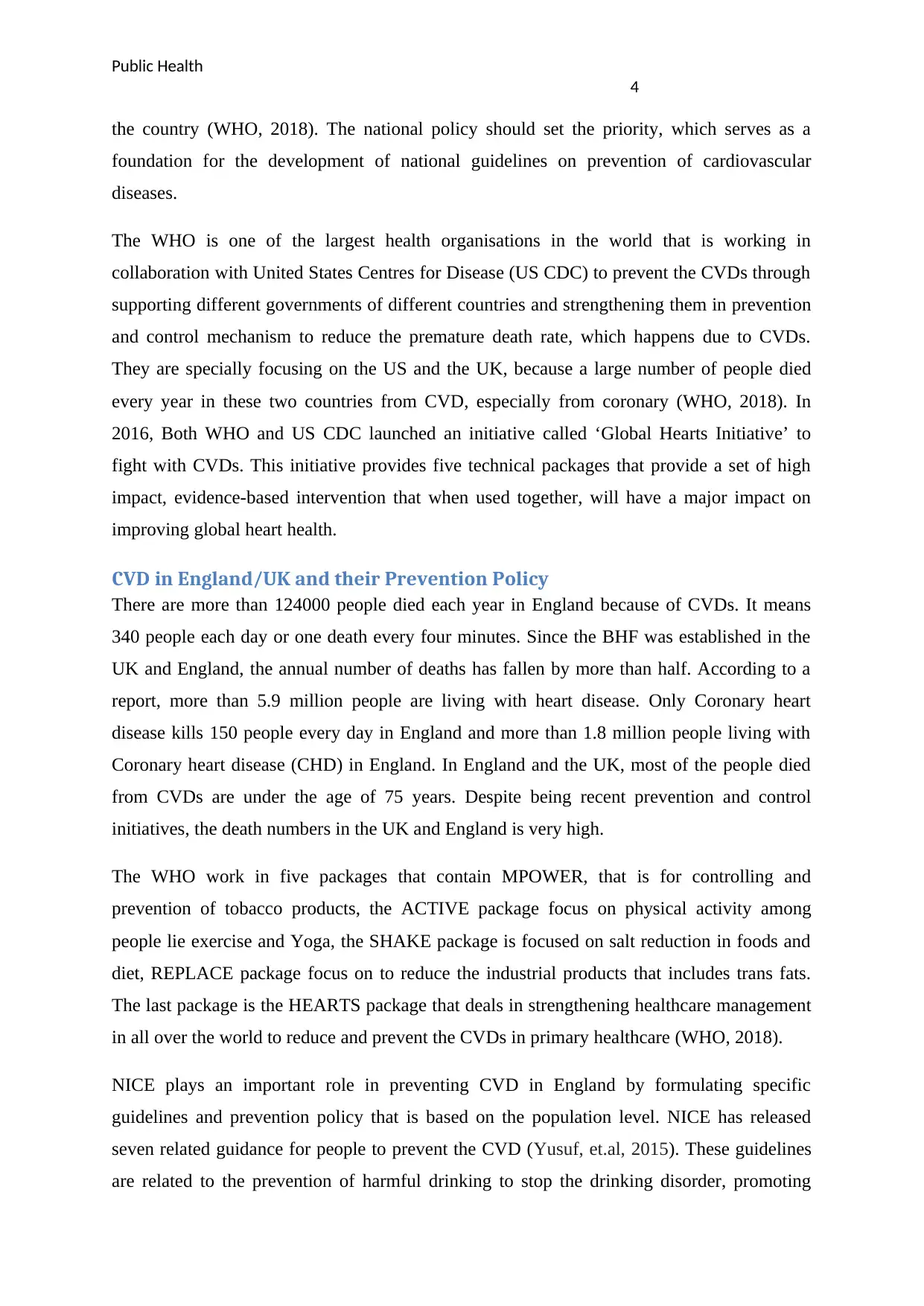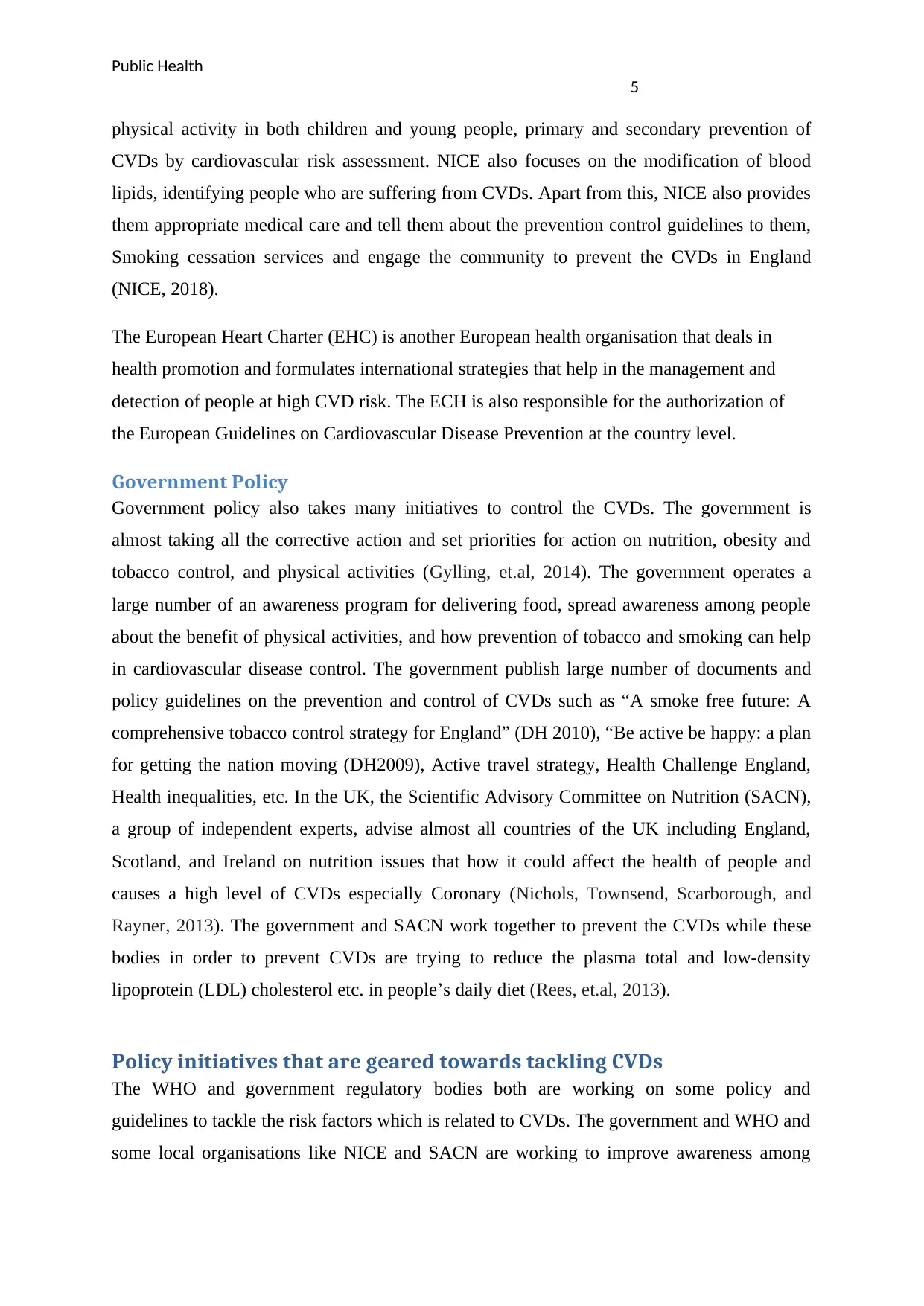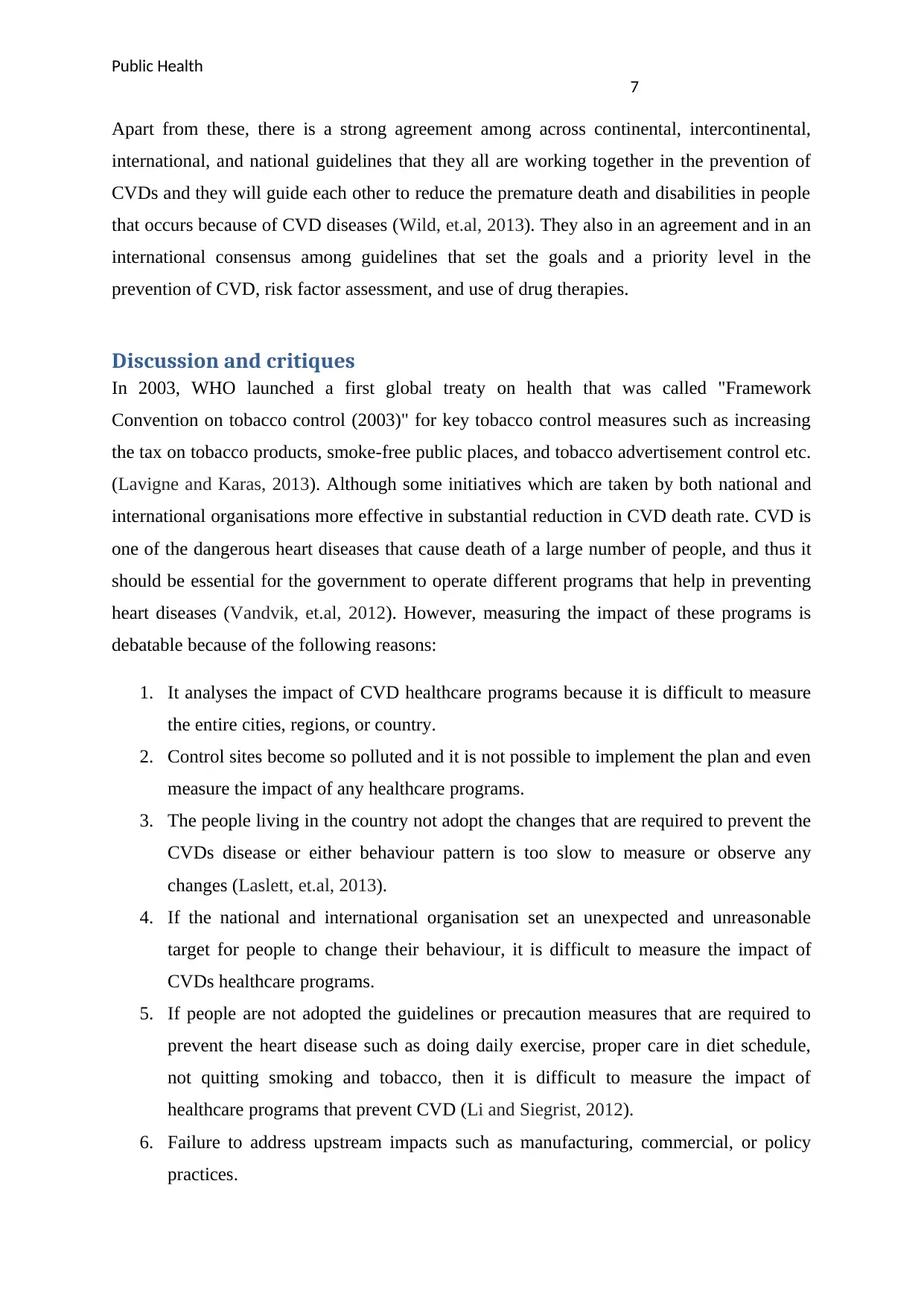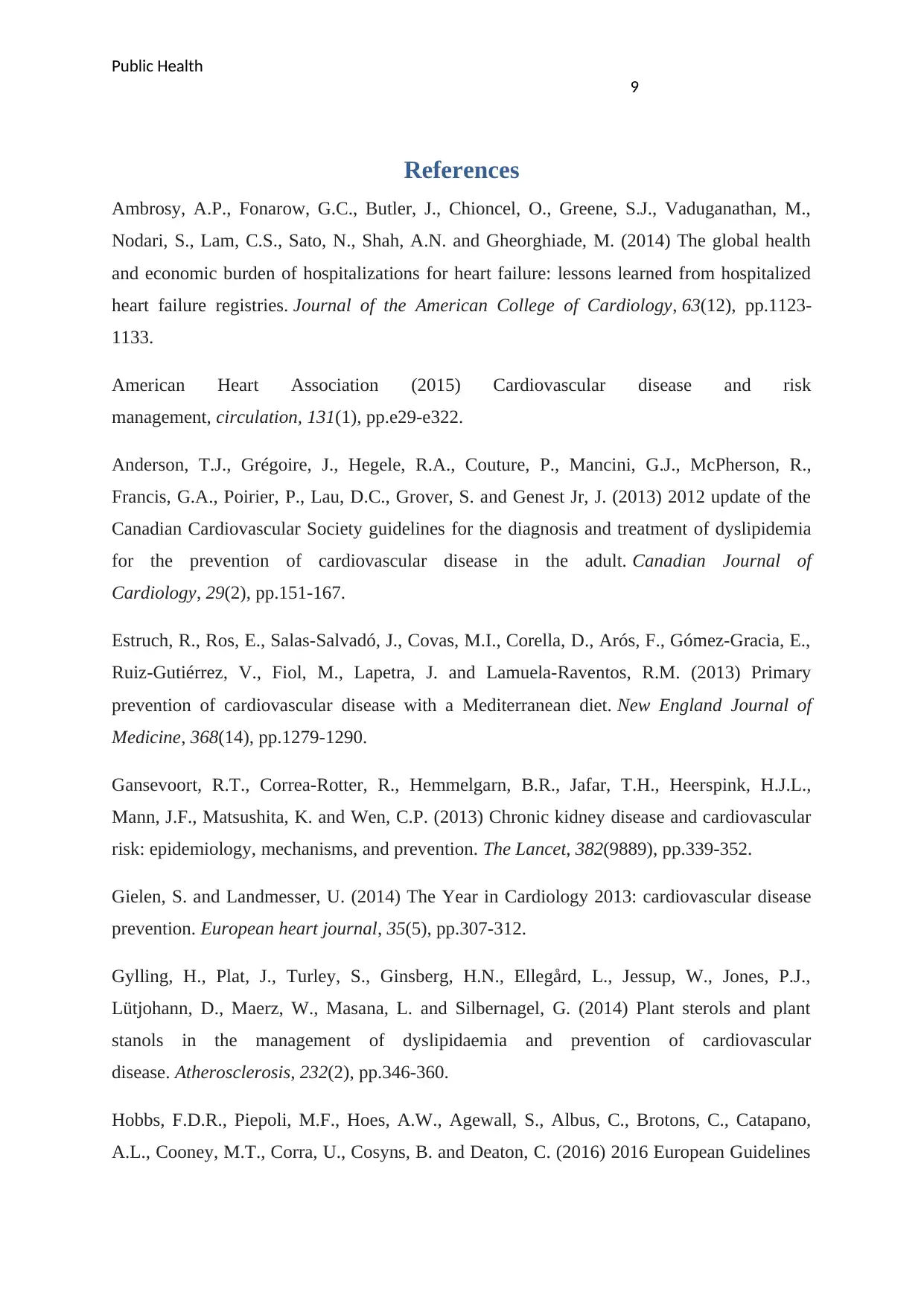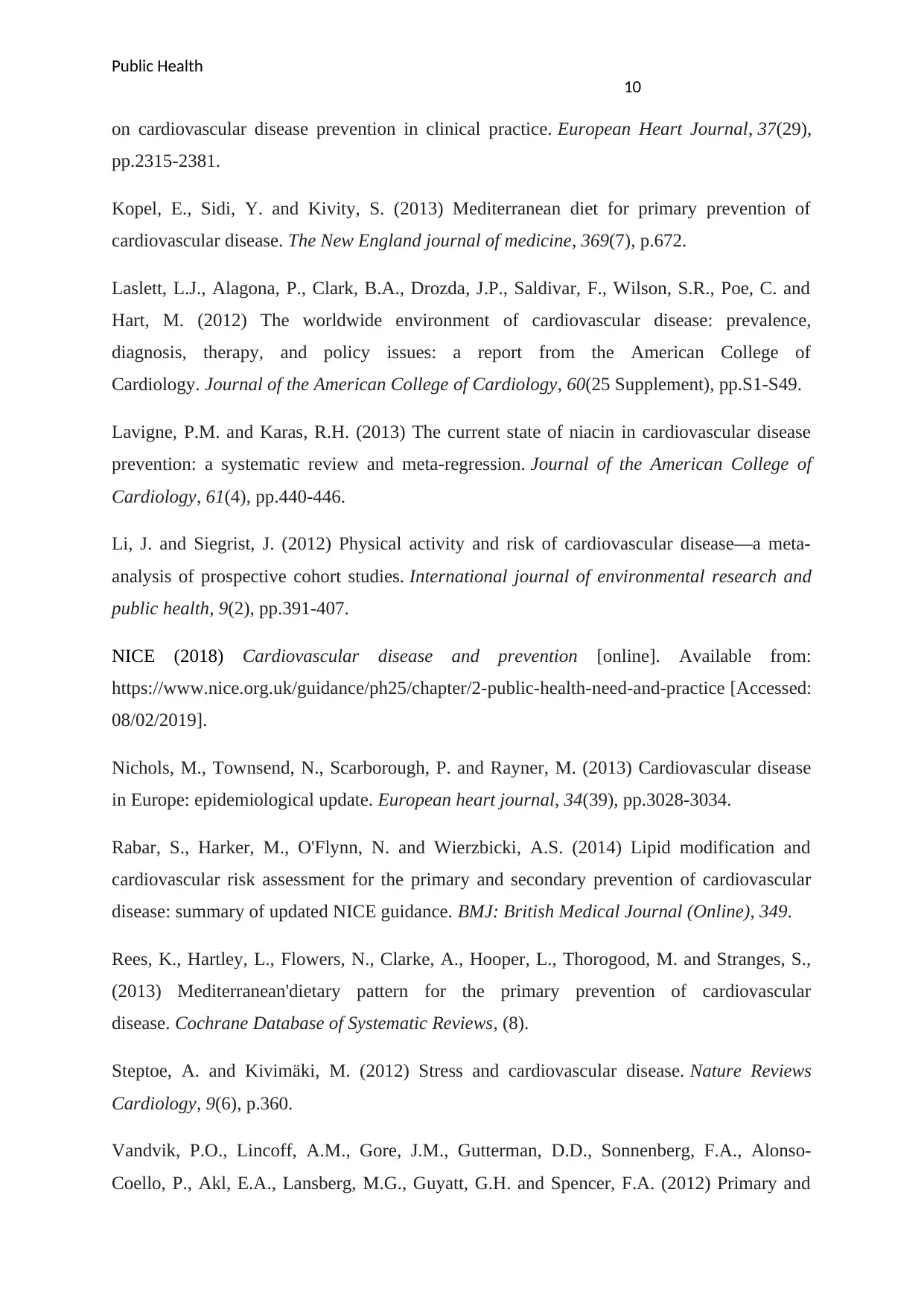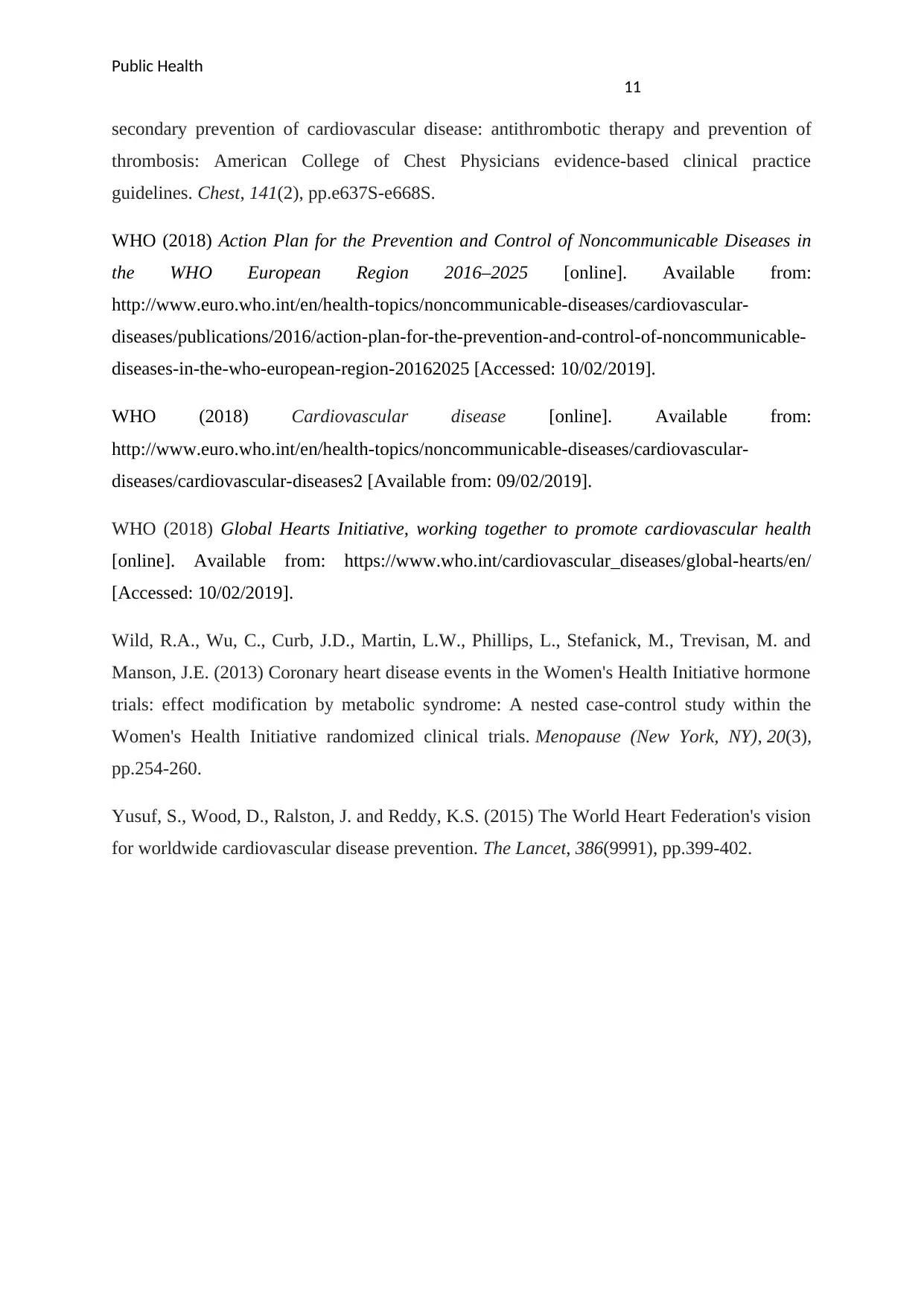This essay discusses Cardiovascular disease (CVD), a major public health problem that describes a wide range of problems in the heart. CVD occurs when the heart is not pumping due to blockage in blood vessels. It can also be linked with damage to blood vessels in organs such as the heart, brain, eyes, and kidneys. CVD is one of the primary causes of death in both men and women worldwide. According to the World Health Organization (WHO), every year 17.7 million people die from CVD, which is almost 31% of global deaths. There are many causes of CVD such as excessive use of tobacco, unscheduled life-routine, high blood pressure, consumption of high sugar and fats in the diet, and high consumption of salt. The essay also discusses various types of CVD including coronary heart disease, strokes and TIAs, peripheral arterial disease, and aortic disease.
![[object Object]](/_next/static/media/star-bottom.7253800d.svg)
![[object Object]](/_next/static/media/star-bottom.7253800d.svg)
